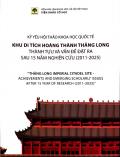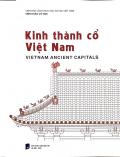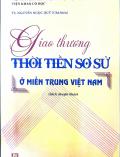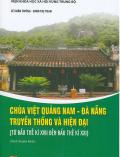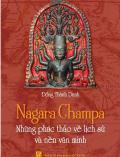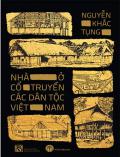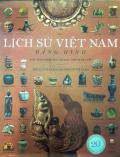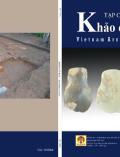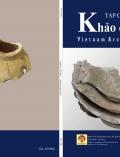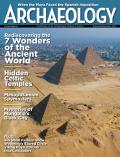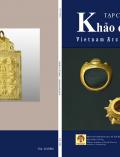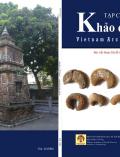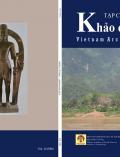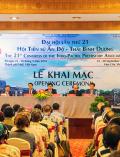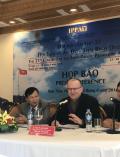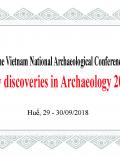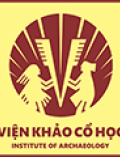Connecting The Dots: The Past of the Maluku Archipelago in a Multidisciplinary Perspective
Conveners: Marlon Ririmasse and Peter Lape
The Maluku (Moluccas) region of eastern Indonesia was historically famous as the Spice Islands. Its role as the source for cloves and nutmeg was recorded in Chinese documents as early as the 2nd century CE. Trade in other exotic commodities such as Bird of Paradise feathers connected other islands in the region to global markets. Contact and interaction with European traders in the 15th century established the role of Maluku as an important intersection for various linguistic groups, religions and political interests.
Geographically situated at the southwest corner of the Pacific Ocean, the Maluku archipelago incorporates the majority of Wallacea, the biogeographic region between the Pleistocene continents Sunda and Sahul and the likely path of early humans migrating between these areas 40-60 kya. A number of Dongson kettledrum scattered in this region indicate possible interaction with the outside world during the late prehistoric period. New rock art sites have been identified and connected Maluku with ancient art in the wider region. Research in the last decade has revealed traces of Neolithic culture that provide insights into the introduction of domestic plants and animals to the region, and provided new ways of understanding how Maluku peoples adapted to new religions and colonial forces.
This positive progress has brought new insights for our understanding of these islands, although compared to its colossal potential, our knowledge of the past of Maluku remains vague. Early human occupation in relation to mobility and interaction with the surrounding areas is still a main question. Likewise, we still have a poor understanding of issues of adaptation in islands environments and early economies. Knowledge of environmental changes in the past and their social impacts has not yet been widely researched. The unique responses of Maluku social groups to outside trade and colonial forces still need the input of archaeological data to counter documentary biases. Many of the thousands of islands in the region have yet to be surveyed by archaeologists.
For over a decade beginning in 1998, violent social conflict in Maluku affected academic research and to some extent, reset the role of the past in the present of the region. Fortunately, following a positive recovery, Maluku has restored its role in global academic interest. A number of international collaborative projects have been conducted to understand culture history of the region from interdisciplinary perspectives. Contemporary residents of Maluku have been increasingly interested in exploring their unique identity by reflecting on their history, culture and archaeological heritage.
This session will discuss these recent developments from the perspectives of archaeology, anthropology, history, linguistics and related studies.
The Maluku (Moluccas) region of eastern Indonesia was historically famous as the Spice Islands. Its role as the source for cloves and nutmeg was recorded in Chinese documents as early as the 2nd century CE. Trade in other exotic commodities such as Bird of Paradise feathers connected other islands in the region to global markets. Contact and interaction with European traders in the 15th century established the role of Maluku as an important intersection for various linguistic groups, religions and political interests.
Geographically situated at the southwest corner of the Pacific Ocean, the Maluku archipelago incorporates the majority of Wallacea, the biogeographic region between the Pleistocene continents Sunda and Sahul and the likely path of early humans migrating between these areas 40-60 kya. A number of Dongson kettledrum scattered in this region indicate possible interaction with the outside world during the late prehistoric period. New rock art sites have been identified and connected Maluku with ancient art in the wider region. Research in the last decade has revealed traces of Neolithic culture that provide insights into the introduction of domestic plants and animals to the region, and provided new ways of understanding how Maluku peoples adapted to new religions and colonial forces.
This positive progress has brought new insights for our understanding of these islands, although compared to its colossal potential, our knowledge of the past of Maluku remains vague. Early human occupation in relation to mobility and interaction with the surrounding areas is still a main question. Likewise, we still have a poor understanding of issues of adaptation in islands environments and early economies. Knowledge of environmental changes in the past and their social impacts has not yet been widely researched. The unique responses of Maluku social groups to outside trade and colonial forces still need the input of archaeological data to counter documentary biases. Many of the thousands of islands in the region have yet to be surveyed by archaeologists.
For over a decade beginning in 1998, violent social conflict in Maluku affected academic research and to some extent, reset the role of the past in the present of the region. Fortunately, following a positive recovery, Maluku has restored its role in global academic interest. A number of international collaborative projects have been conducted to understand culture history of the region from interdisciplinary perspectives. Contemporary residents of Maluku have been increasingly interested in exploring their unique identity by reflecting on their history, culture and archaeological heritage.
This session will discuss these recent developments from the perspectives of archaeology, anthropology, history, linguistics and related studies.
Thông báo
Thứ năm, 11 Tháng 12 2025- 17:31
Thứ hai, 29 Tháng 9 2025- 18:20
Thư viện
- Tác giả: Trung tâm Nghiên cứu Kinh Thành, Viện Khảo cổ học
- Nxb: Khoa học xã hội - 2025
- Số trang: 592tr
- Khổ sách: 24x29 cm
- Hình thức bìa...
- Tác giả: Trung tâm Nghiên cứu Kinh Thành, Viện Khảo cổ học
- Nxb: Khoa học xã hội - 2025
- Số trang: 255tr
- Khổ sách: 24x 29cm
- Hình thức bìa...
- Tác giả: TS. Nguyễn Ngọc Quý (chủ biên)
- Nxb: Khoa học xã hội - 2025
- Số trang: 288tr
- Khổ sách: 24cm
- Hình thức bìa: mềm
- Tác giả: Lê Xuân Thông - Đinh Thị Toan
- Nxb: Khoa khoa học xã hội - 2024
- Số trang: 394tr
- Khổ sách: 16 x 24cm
- Tác giả: Đổng Thành Danh
- Nxb: Khoa học xã hội - 2023
- Số trang: 248tr
- Khổ sách: 16 x 24cm
- Tác giả: Louis Malleret
- Nxb: Tổng hợp TP.Hồ Chí Minh - 2023
- Số trang: 567tr
- Khổ sách: 16 x 24cm
- Tác giả: Nguyễn Chí Bền
- Nxb: Khoa khoa học xã hội - 2024
- Số trang: 417tr
- Khổ sách: 16 x 24cm
- Tác giả: Nguyễn Khắc Tụng
- Nxb: Khoa học xã hội - 2023
- Số trang: 695tr
- Khổ sách: 16 x 24cm
- Tác giả: Đông A
- Nxb: Đại học sư phạm-
- Số trang: 660tr
- Khổ sách: 25x30cm
- Hình thức bìa: cứng
Tạp chí
Dày 100 trang, khổ 19x27cm
Dày 100 trang, khổ 19x27cm
Dày 100 trang, khổ 19x27cm
Dày 100 trang, khổ 19x27cm
November/December 2025 - Archaeology Magazine
Dày 100 trang, khổ 19x27cm
Dày 100 trang, khổ 19x27cm
Dày 100 trang, khổ 19x27cm
Dày 100 trang, khổ 19x27cm
Tin tức khác
24 Th9 2018 06:12
22 Th9 2018 11:09
28 Th8 2018 15:04
15 Th8 2018 13:10
25 Th7 2018 04:21
25 Th7 2018 04:19
Copyright © 2016 by khaocohoc.gov.vn.
Thiết kế bởi VINNO
Tổng số lượt truy cập: 10406753
Số người đang online: 20

